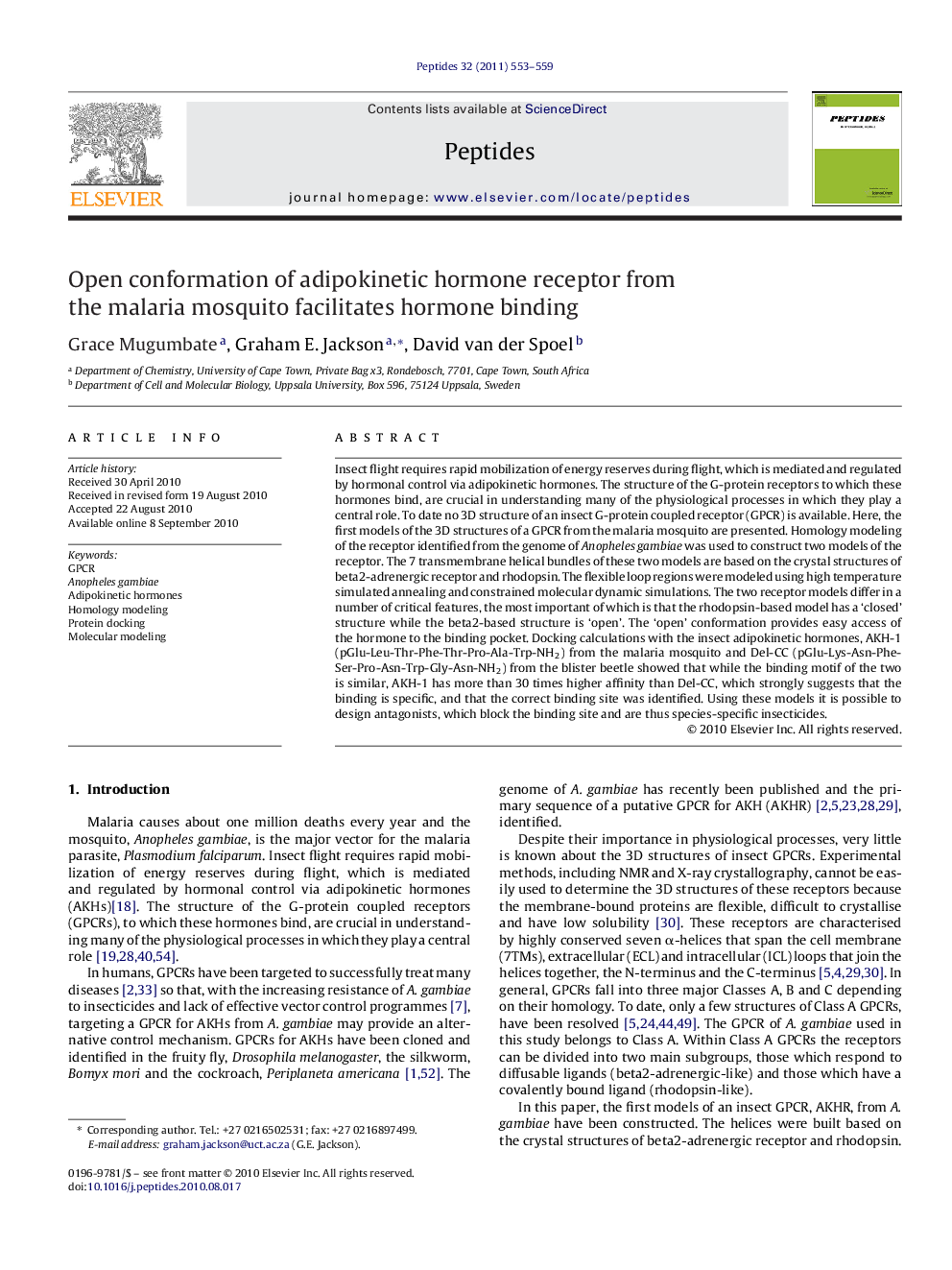| کد مقاله | کد نشریه | سال انتشار | مقاله انگلیسی | نسخه تمام متن |
|---|---|---|---|---|
| 2006412 | 1066339 | 2011 | 7 صفحه PDF | دانلود رایگان |

Insect flight requires rapid mobilization of energy reserves during flight, which is mediated and regulated by hormonal control via adipokinetic hormones. The structure of the G-protein receptors to which these hormones bind, are crucial in understanding many of the physiological processes in which they play a central role. To date no 3D structure of an insect G-protein coupled receptor (GPCR) is available. Here, the first models of the 3D structures of a GPCR from the malaria mosquito are presented. Homology modeling of the receptor identified from the genome of Anopheles gambiae was used to construct two models of the receptor. The 7 transmembrane helical bundles of these two models are based on the crystal structures of beta2-adrenergic receptor and rhodopsin. The flexible loop regions were modeled using high temperature simulated annealing and constrained molecular dynamic simulations. The two receptor models differ in a number of critical features, the most important of which is that the rhodopsin-based model has a ‘closed’ structure while the beta2-based structure is ‘open’. The ‘open’ conformation provides easy access of the hormone to the binding pocket. Docking calculations with the insect adipokinetic hormones, AKH-1 (pGlu-Leu-Thr-Phe-Thr-Pro-Ala-Trp-NH2) from the malaria mosquito and Del-CC (pGlu-Lys-Asn-Phe-Ser-Pro-Asn-Trp-Gly-Asn-NH2) from the blister beetle showed that while the binding motif of the two is similar, AKH-1 has more than 30 times higher affinity than Del-CC, which strongly suggests that the binding is specific, and that the correct binding site was identified. Using these models it is possible to design antagonists, which block the binding site and are thus species-specific insecticides.
Journal: Peptides - Volume 32, Issue 3, March 2011, Pages 553–559